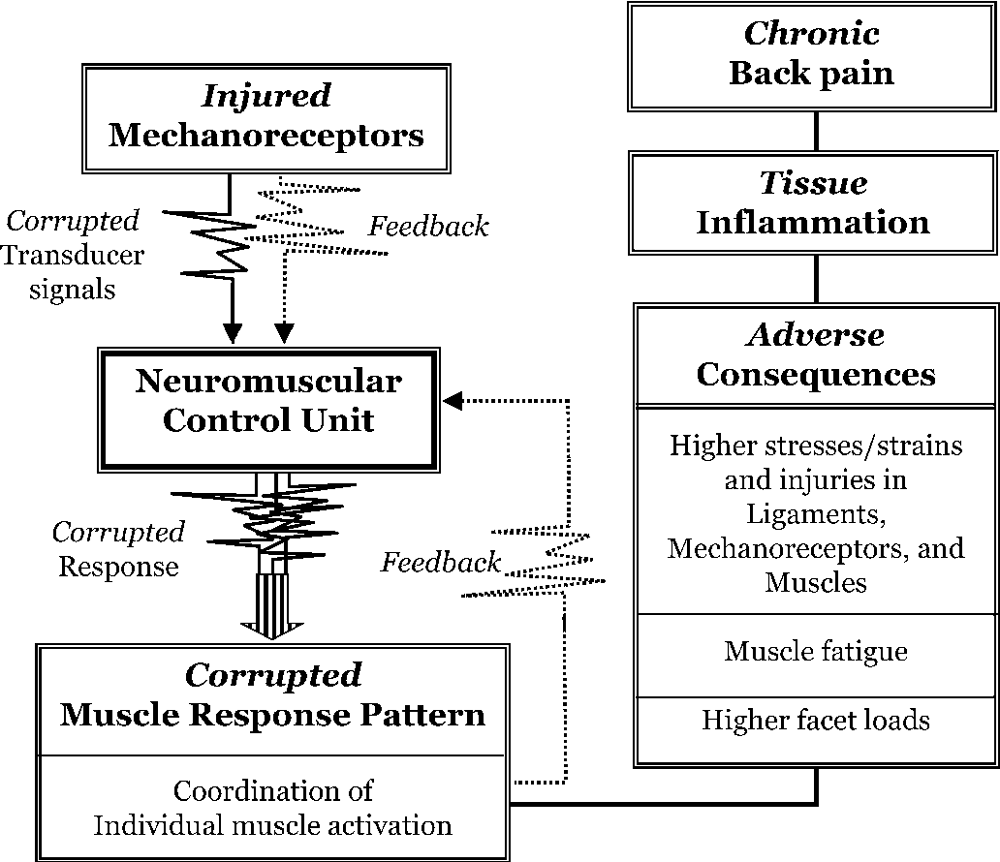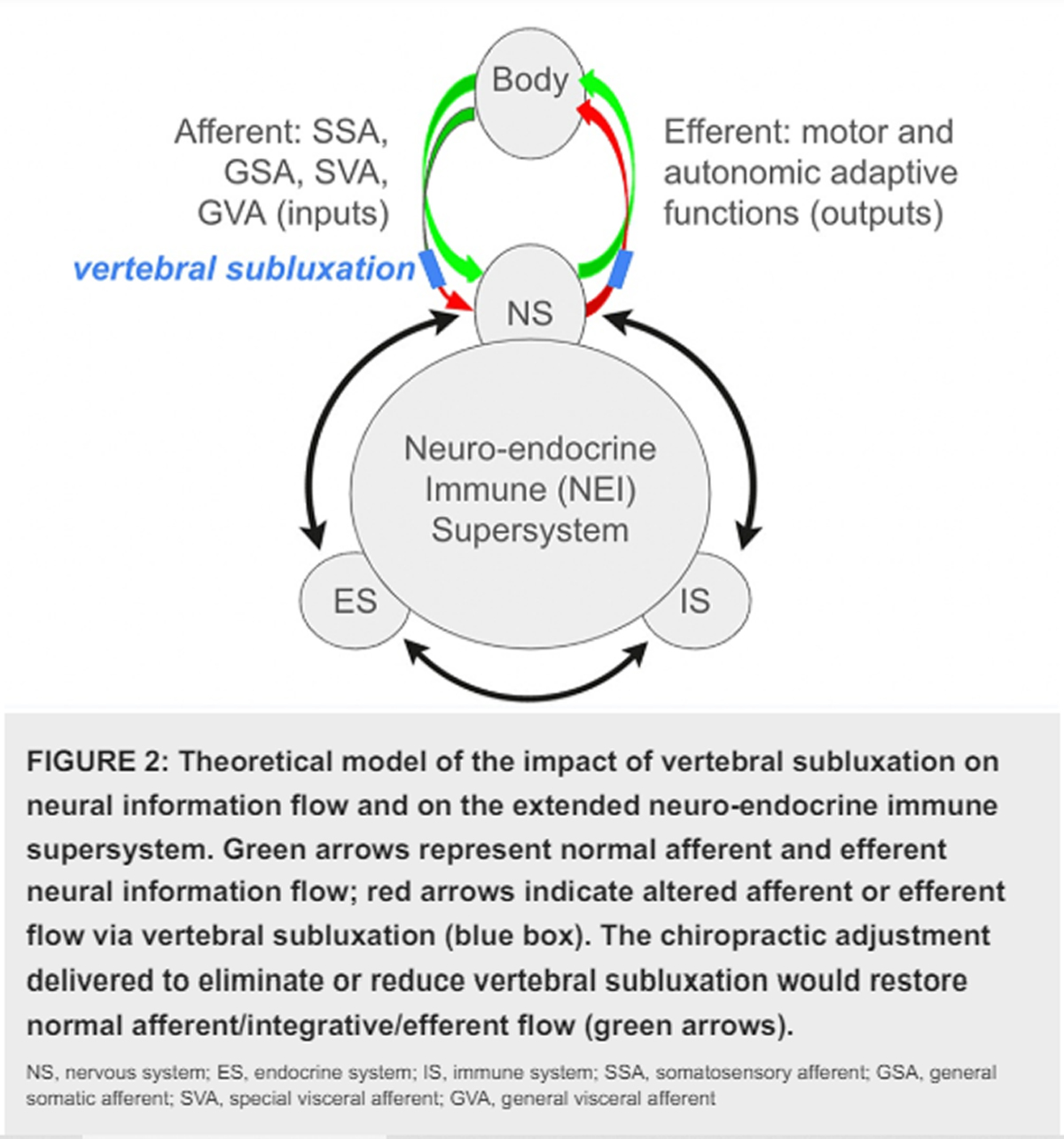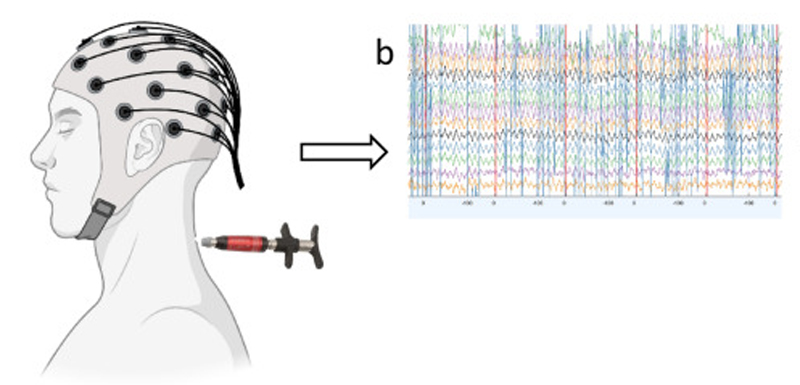A Hypothesis of Chronic Back Pain: Ligament Subfailure Injuries Lead to Muscle Control Dysfunction
SOURCE: European Spine Journal 2006 (May); 15 (5): 668–676
Manohar M. Panjabi
Biomechanics Research Laboratory,
Department of Orthopaedics and Rehabilitation,
Yale University School of Medicine,
New Haven, CT 06520-8071, USA.
Clinical reports and research studies have documented the behavior of chronic low back and neck pain patients. A few hypotheses have attempted to explain these varied clinical and research findings. A new hypothesis, based upon the concept that subfailure injuries of ligaments (spinal ligaments, disc annulus and facet capsules) may cause chronic back pain due to muscle control dysfunction, is presented. The hypothesis has the following sequential steps. Single trauma or cumulative microtrauma causes subfailure injuries of the ligaments and embedded mechanoreceptors. The injured mechanoreceptors generate corrupted transducer signals, which lead to corrupted muscle response pattern produced by the neuromuscular control unit.
Muscle coordination and individual muscle force characteristics, i.e. onset, magnitude, and shut-off, are disrupted. This results in abnormal stresses and strains in the ligaments, mechanoreceptors and muscles, and excessive loading of the facet joints. Due to inherently poor healing of spinal ligaments, accelerated degeneration of disc and facet joints may occur. The abnormal conditions may persist, and, over time, may lead to chronic back pain via inflammation of neural tissues. The hypothesis explains many of the clinical observations and research findings about the back pain patients. The hypothesis may help in a better understanding of chronic low back and neck pain patients, and in improved clinical management.
From the Full-Text Article:
Introduction
There are more articles like this @ our:
Low back pain is an important societal problem with significant costs. Up to 70–85% of the population in industrialized societies experience low back pain at least once in their lifetime, with point prevalence of about 30%. [1, 24] The total cost of low back pain has been estimated to exceed 50 billion dollars per year in the USA. [17] Although neck pain due to whiplash-associated disorder is less common and less costly, awareness of this disorder, diagnosis and treatment are equally baffling. [63] The term “back pain” as used here does not include back pain due to known infections, tumor, systemic disease, fractures or fracture dislocations. [73] Further, the term used here refers generally to the entire spine but in particular to the cervical and lumbar regions.
Back pain is complex. The exact cause of most back (low back and neck) pain remains unproven. [72] The multi-factorial nature of back pain is well recognized with respect to its causes, diagnosis, chronicity, disability and treatment. [73] Abnormal mechanics of the spinal column has been hypothesized to lead to back pain via nociceptive sensors. [72]
Read the rest of this Full Text article now!






Leave A Comment